
I love muntjac. They’re weird, intriguing and delicious in equal measure, and I have been lucky enough to stalk them on a number of occasions in East Anglia. It has always been an entertaining challenge, wandering through deep reeds and alder carrs on the hunt for the strange little beasts in the dusk.
From where I am standing, the only problem with muntjac seems to arise when you reach for the skinning knife. When I returned home with a pair of muntjac carcasses in the back of my car, a friend once came to help me butcher them. After 10 minutes, he described the carcass as being “like a hare that has been superglued into a wetsuit”.
Having read around the subject, I realised that I love muntjac because they are unfamiliar. I live in Scotland and the little deer are simply an exotic novelty to me. Further south, people who live alongside muntjac take a much less favourable view. Given their outlandish appearance and curiosity of manners, it is hard to imagine how these little deer could ever lose their charm but, while familiarity does not breed contempt, it does nurture a frustrated intolerance.
The negative impact of muntjac has been well documented in British gardens, woodlands and nature. The invaders infest the undergrowth and strip away the natural regeneration that is vital to songbirds such as nightingales. Hedgerows are shredded and, without very firm management, local biodiversity takes a nosedive.
It is clear that muntjac continue to expand and extend their reach across an ever-larger part of England. As they follow natural corridors of habitat and exploit all kinds of woods and farmland, it is probably fair to say that their range will continue to grow and consolidate for the foreseeable future.
This story is from the {{IssueName}} edition of {{MagazineName}}.
Start your 7-day Magzter GOLD free trial to access thousands of curated premium stories, and 9,000+ magazines and newspapers.
Already a subscriber ? Sign In
This story is from the {{IssueName}} edition of {{MagazineName}}.
Start your 7-day Magzter GOLD free trial to access thousands of curated premium stories, and 9,000+ magazines and newspapers.
Already a subscriber? Sign In
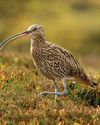
United we stand
Following United Utilities' decision to end grouse shooting on its land, Lindsay Waddell asks what will happen if we ignore our vital moors

Serious matters
An old gamebook prompts a contemplation on punt-gunning
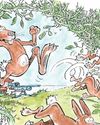
They're not always as easy as they seem
While coneys of the furry variety don't pose a problem for Blue Zulu, he's left frustrated once again by bolting bunnies of the clay sort
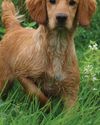
Debutant gundogs
There's lots to think about when it comes to making the decision about when to introduce your dog to shooting

When the going gets rough
Al Gabriel returns to the West London Shooting School to brush up on his rough shooting technique

The Field Guide To British Deer - BDS 60th Anniversary Edition
In this excerpt from the 60th anniversary edition of the BDS's Field Guide To British Deer, Charles Smith-Jones considers the noise they make
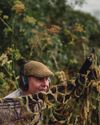
A step too far?
Simon Garnham wonders whether a new dog, a new gun and two different fields in need of protection might have been asking too much for one afternoon's work

Two bucks before breakfast
A journey from old South London to rural Hertfordshire to stalk muntjac suggests that the two aren't as far detached as they might seem
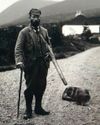
Stalking Diary
Stalkers can be a sentimental bunch, and they often carry a huge attachment to their hill

Gamekeeper
Alan Edwards believes unique, private experiences can help keepers become more competent and passionate custodians of the countryside